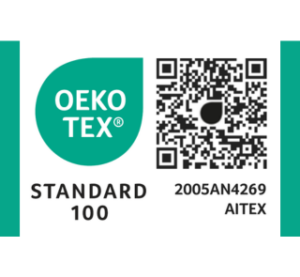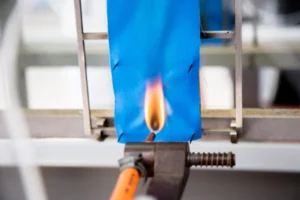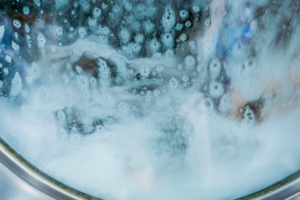All the regulations that regard fire and heat are included in UNE EN ISO 11612: protective clothing against heat and flame (ISO 11612: 2008).
The following are the rules governing the thermal performance of protective clothing in foundries.

ISO 17493 – Heat resistance up to 180 ºC
Fabric and accessories used in producing the garment must not burn nor melt and must not shrink more than 5%.
ISO 15025 – Limited flame propagation
The requirement for a foundry suit is A1. Also in stitching. The flame is placed perpendicularly to the surface of the fabric for 10 s and it must comply to the following requirements:
- No sample must burn to the top or sides
b. Holes must not form in any samples
c. No burned or melted remains must break away from the samples
d. Post-combustion time must be ≤ 2 s
e. Average residual incandescence (1) must be ≤ 2 s
ISO 9151 – Convective heat
In this regulation, the fabric is subjected to an incident heat flux. The heat that passes through sample is measured using a calorimeter located above, and in contact with, the fabric sample. The time, in seconds, needed for the calorimeter’s temperature to increase 24 ºC ± 0.2 ºC is measured. The minimum required in a foundry is B1, and when the work is carried out near furnaces or crucibles, more protection can be required (B2), in which case suits with aluminised fabrics will need to be used.
ISO 6942 – Radiant heat
A fabric sample is subjected to an incident radiant heat flow. The heat that passes through sample is measured using a calorimeter located behind, and in contact with, the fabric sample. Radiation is halted when the calorimeter temperature reaches 10 ºK or after 5 minutes. The time needed, in seconds, to produce the temperature increase in the calorimeter is measured. This time is the length of time that will pass before the person using the suit will start to feel pain due to second degree burns produced by this increase in temperature. As with the previous regulation, the minimum protection required is C1, though for long-term work in front of furnaces or crucibles a C3 or even C4 level protection is necessary, whereby aluminised suits will be needed
ISO 12127 – Contact heat
A metallic cylinder, heated to 250 ºC, is placed on the material sample. A calorimeter is placed on the other side of the material, measuring the temperature rise. The time taken for the calorimeter to raise 10 ºC is measured.
The protection required for a foundry is at least an F1 level. As well as the thermal performance that EN ISO 11612 contemplates, we will also comment upon electric arc regulations in this point, which are becoming required more and more for this regulation.






